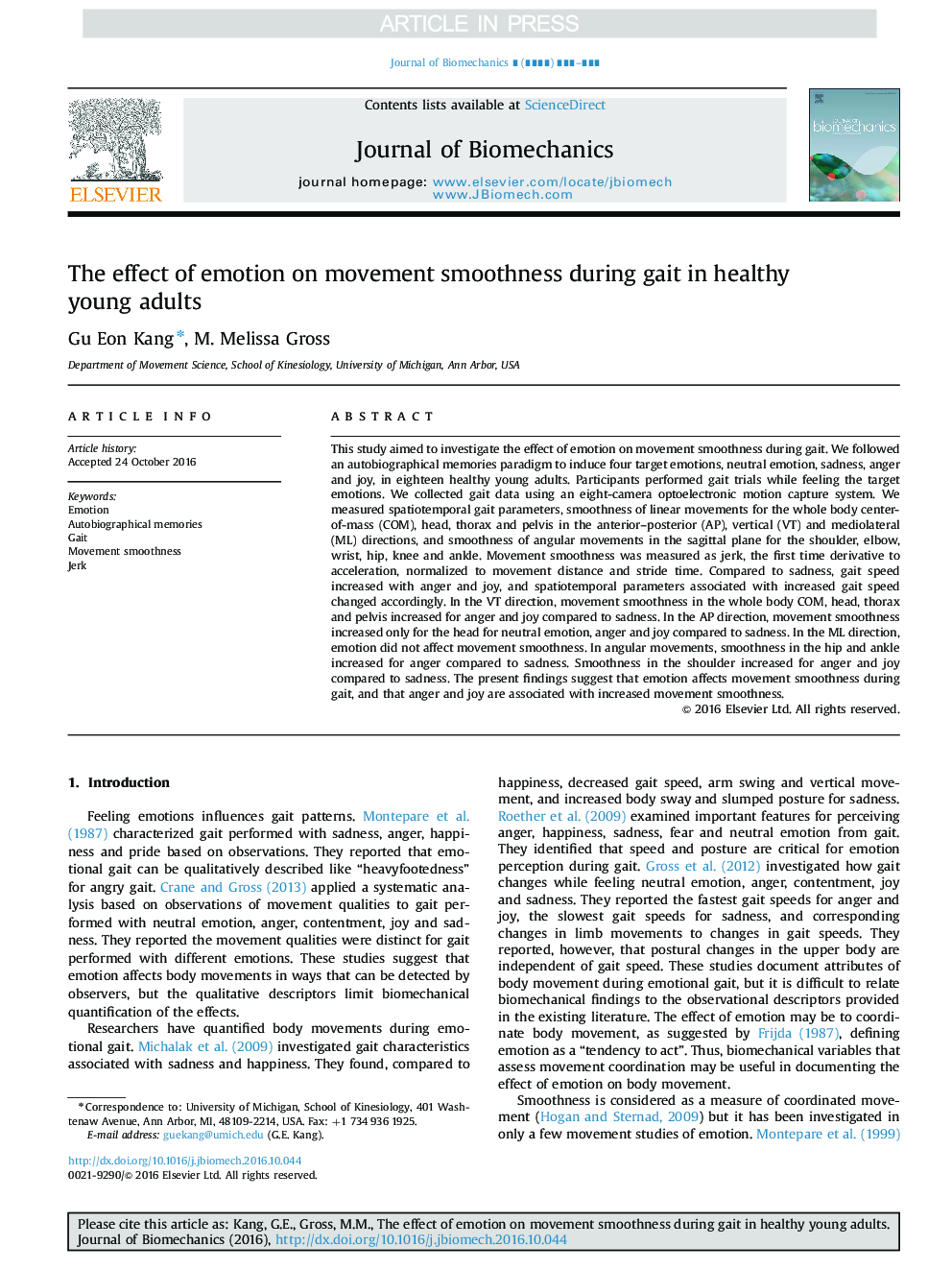| Article ID | Journal | Published Year | Pages | File Type |
|---|---|---|---|---|
| 5032308 | Journal of Biomechanics | 2016 | 6 Pages |
Abstract
This study aimed to investigate the effect of emotion on movement smoothness during gait. We followed an autobiographical memories paradigm to induce four target emotions, neutral emotion, sadness, anger and joy, in eighteen healthy young adults. Participants performed gait trials while feeling the target emotions. We collected gait data using an eight-camera optoelectronic motion capture system. We measured spatiotemporal gait parameters, smoothness of linear movements for the whole body center-of-mass (COM), head, thorax and pelvis in the anterior-posterior (AP), vertical (VT) and mediolateral (ML) directions, and smoothness of angular movements in the sagittal plane for the shoulder, elbow, wrist, hip, knee and ankle. Movement smoothness was measured as jerk, the first time derivative to acceleration, normalized to movement distance and stride time. Compared to sadness, gait speed increased with anger and joy, and spatiotemporal parameters associated with increased gait speed changed accordingly. In the VT direction, movement smoothness in the whole body COM, head, thorax and pelvis increased for anger and joy compared to sadness. In the AP direction, movement smoothness increased only for the head for neutral emotion, anger and joy compared to sadness. In the ML direction, emotion did not affect movement smoothness. In angular movements, smoothness in the hip and ankle increased for anger compared to sadness. Smoothness in the shoulder increased for anger and joy compared to sadness. The present findings suggest that emotion affects movement smoothness during gait, and that anger and joy are associated with increased movement smoothness.
Related Topics
Physical Sciences and Engineering
Engineering
Biomedical Engineering
Authors
Gu Eon Kang, M. Melissa Gross,
